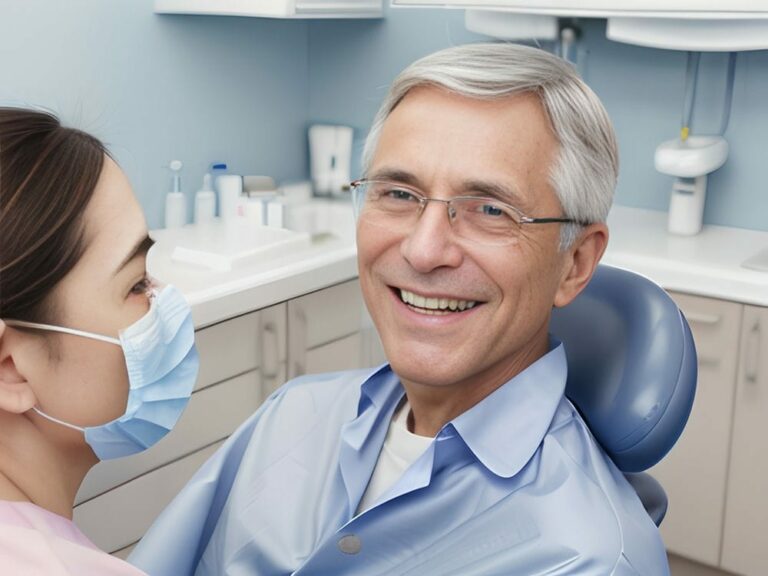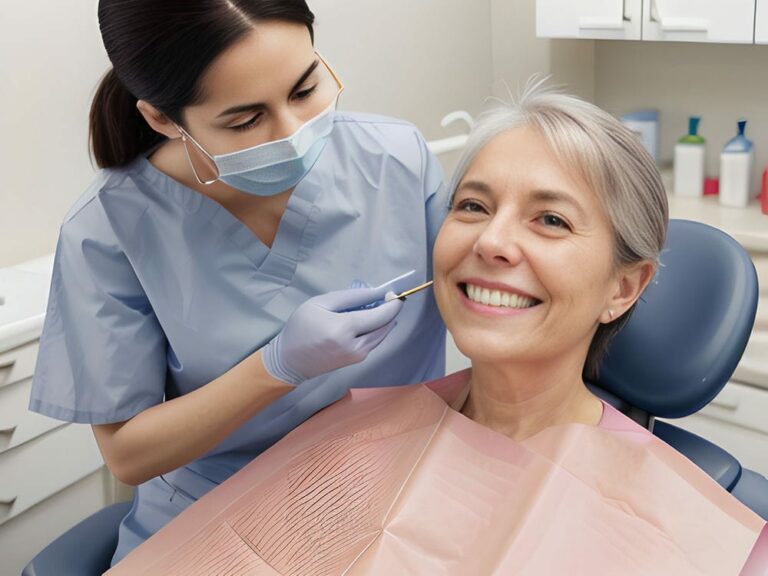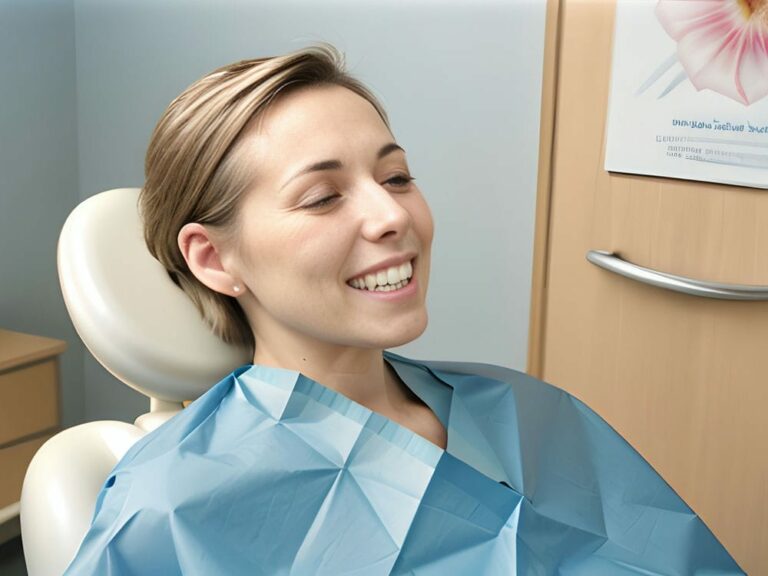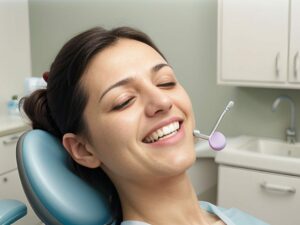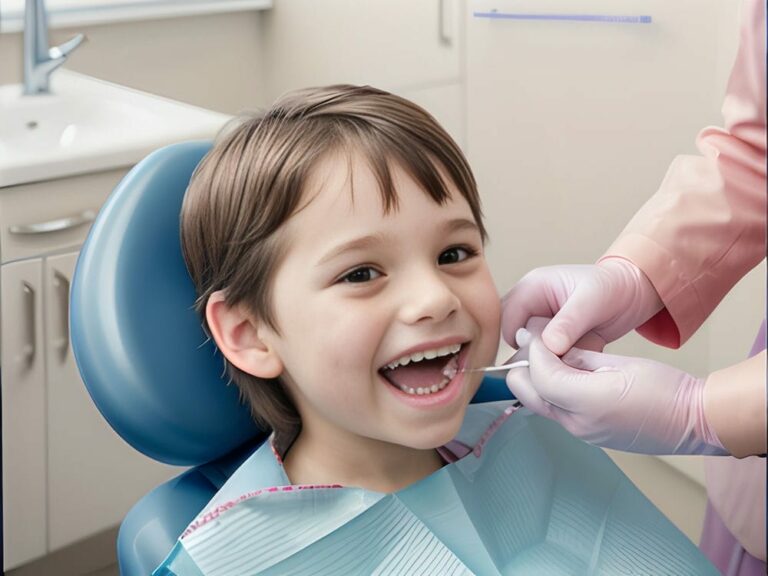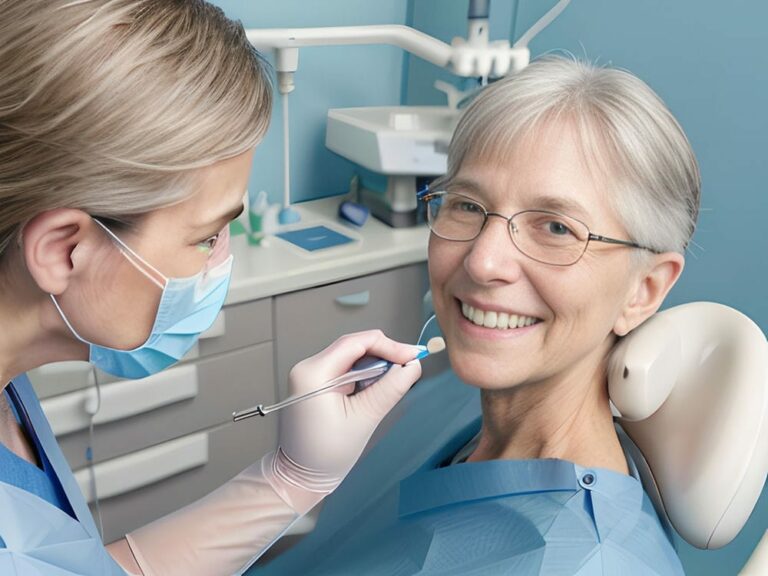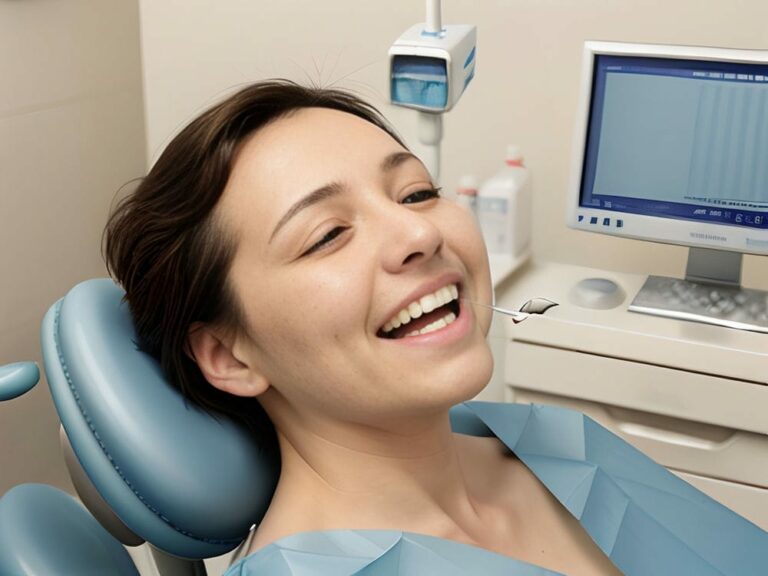The Importance of Access to Dental Care for Global Oral Health
The Importance of Access to Dental Care for Global Oral Health
Access to dental care plays a crucial role in promoting global oral health. Oral diseases, such as tooth decay and gum disease, are among the most prevalent health conditions worldwide, affecting billions of people. Without proper access to dental care, individuals in underserved communities face significant challenges in maintaining good oral health and preventing dental issues.
Firstly, access to dental care is essential for the prevention and early detection of oral diseases. Regular dental check-ups enable dentists to identify potential problems at an early stage when they are easier and less expensive to treat. This helps prevent the progression of oral diseases and reduces the need for invasive and costly procedures later on. By providing preventive services like cleanings, fluoride treatments, and sealants, dental professionals can educate patients about proper oral hygiene practices and empower them to take charge of their own oral health.
Secondly, access to dental care is vital for addressing existing oral health issues in underserved communities. Many individuals living in remote areas or low-income regions often lack the resources or means to seek appropriate dental treatment. As a result, they may suffer from chronic pain or discomfort due to untreated cavities, infections, or missing teeth. This not only affects their quality of life but also hinders their ability to eat properly and speak clearly. Accessible dental services can provide relief by offering affordable treatments that alleviate pain and restore proper functioning.
Lastly, improving access to dental care contributes to overall healthcare equity and social justice. Oral health is an integral part of overall well-being; however, it is often overlooked or deemed less important than other medical conditions. By ensuring equal access to dental care for all individuals regardless of their socioeconomic status or geographical location, we can bridge the gap between privileged communities with easy access and those who are marginalized. This helps promote fairness in healthcare provision and empowers underserved populations by enabling them to achieve optimal oral health.
In conclusion, access to dental care is crucial in promoting global oral health. It plays a significant role in prevention, early detection, and treatment of oral diseases. By providing comprehensive and affordable dental services to underserved communities and remote areas, we can improve the overall well-being and quality of life for individuals around the world.
Understanding the Gap in Global Access to Dental Care
Understanding the Gap in Global Access to Dental Care
Access to dental care is a significant challenge in many areas of the world, particularly in developing countries. Limited resources, inadequate infrastructure, and a shortage of trained dental professionals contribute to the gap in global access to dental care. These factors result in underserved communities lacking the necessary services and treatments required for optimal oral health.
One key factor contributing to the gap is the scarcity of dental facilities and professionals in remote areas. Many individuals living in these regions have limited or no access to basic dental services due to the absence of nearby clinics or dentists. This geographical barrier prevents them from receiving timely preventive care or seeking treatment for existing oral health issues.
Additionally, developing countries often face financial constraints that hinder their ability to provide affordable dental services. The cost of establishing and maintaining dental clinics, purchasing equipment, and training healthcare workers can be prohibitive for these nations. As a result, individuals in these communities are unable to afford necessary treatments, leaving them vulnerable to deteriorating oral health.
Furthermore, education and awareness about oral health are often lacking in developing countries. Many people are not aware of proper oral hygiene practices or do not understand the importance of regular dental check-ups. This lack of knowledge further exacerbates the gap in access to dental care as individuals may not prioritize seeking treatment until they experience severe pain or discomfort.
In summary, understanding the gap in global access to dental care requires recognizing the challenges faced by underserved communities in remote areas and developing countries. Limited availability of resources and trained professionals, financial constraints, and low awareness about oral health contribute to this disparity. Addressing these issues through increased investment in infrastructure, education programs, and affordable healthcare services is crucial for bridging this gap and promoting better oral health worldwide.
Key Challenges in Bridging the Gap for Global Dental Care
Bad gateway.
Innovations and Strategies for Improving Global Access to Dental Treatment
Bridging the Gap in Global Access to Dental Care: A Comprehensive Guide
In order to improve global access to dental treatment, it is crucial to address key challenges that hinder this accessibility. One major challenge is the lack of oral health education in many communities. Without proper knowledge and understanding of oral health practices, individuals may not prioritize their dental care or know how to prevent common dental issues. Therefore, implementing comprehensive oral health education programs is essential in bridging the gap for global dental care.
Additionally, there is a shortage of dental professionals in many areas around the world. This shortage further limits access to quality dental treatment, as there are simply not enough trained professionals available to meet the demand. To overcome this challenge, it is important to invest in training and education programs for aspiring dental professionals in underserved regions. By increasing the number of qualified dentists and hygienists, more individuals will have access to necessary dental care.
Furthermore, volunteer programs play a crucial role in improving global access to dental treatment. These programs bring together skilled dental professionals who are willing to donate their time and expertise to provide much-needed services in underserved communities. By mobilizing volunteers and organizing outreach initiatives, it becomes possible to reach populations that would otherwise be unable to afford or access dental care.
By addressing these challenges through comprehensive oral health education, investing in training programs for dental professionals, and utilizing volunteer efforts, we can make significant strides towards improving global access to dental treatment. It is imperative that governments, organizations, and individuals come together to implement these innovations and strategies so that everyone has equal opportunity for good oral health.
Promoting Preventive Measures for Better Oral Health on a Global Scale
Promoting preventive measures for better oral health on a global scale is crucial in improving access to dental care. One effective strategy is through outreach programs, where dental professionals visit underserved communities and provide education on proper oral hygiene practices. These programs not only educate individuals about the importance of regular brushing, flossing, and dental check-ups but also emphasize the role of diet and lifestyle choices in maintaining good oral health. By reaching out to communities directly, these outreach initiatives can empower individuals to take control of their own oral health.
Another approach to promoting preventive measures is through mobile clinics. These clinics are equipped with basic dental equipment and can be easily transported to remote or rural areas where access to dental care is limited. Mobile clinics offer services such as cleanings, screenings, and basic treatments, allowing individuals to receive preventive care without having to travel long distances or incur high costs. By bringing dental care directly to communities in need, mobile clinics play a crucial role in preventing common dental issues and reducing the need for more extensive treatments later on.
In addition to outreach programs and mobile clinics, public health campaigns are essential in promoting preventive measures for better oral health. These campaigns can utilize various media platforms such as television, radio, social media, and print materials to spread awareness about good oral hygiene practices and the importance of regular dental check-ups. Public health campaigns not only educate individuals but also aim to change societal norms by emphasizing the significance of oral health as part of overall well-being. By raising awareness and promoting preventive measures on a larger scale, public health campaigns contribute towards creating a culture that values good oral hygiene.
By implementing outreach programs, utilizing mobile clinics, and conducting public health campaigns, we can promote preventive measures for better oral health on a global scale. These strategies empower individuals with knowledge about proper oral hygiene practices while also ensuring that they have access to necessary preventive care. Improving global access to dental treatment starts with prevention and education – by focusing on these key areas, we can bridge the gap and create a world where everyone has equal opportunity for good oral health.
Addressing Barriers to Dental Care in Underserved Communities Worldwide
Addressing Barriers to Dental Care in Underserved Communities Worldwide
Access to dental care is a significant challenge for underserved communities worldwide. One of the primary barriers is the lack of affordable dental insurance. Many individuals and families in these communities simply cannot afford traditional dental insurance plans, making it difficult for them to access necessary dental treatments and preventive care. Without coverage, individuals are more likely to delay or forgo dental visits, leading to the progression of oral health issues and the need for more extensive and costly treatments later on.
Another barrier to dental care in underserved communities is the limited availability of quality dental services. In many remote or rural areas, there is a shortage of qualified dentists and dental clinics. This scarcity makes it challenging for individuals living in these areas to receive timely and appropriate dental care. Furthermore, even when services are available, the quality may be compromised due to a lack of resources or outdated equipment.
Additionally, a lack of awareness and education about the importance of oral health can prevent individuals from seeking proper dental care. In underserved communities where oral health literacy is low, people may not prioritize regular check-ups or understand the significance of preventive measures such as brushing and flossing. This lack of knowledge contributes to poor oral health outcomes and exacerbates existing barriers to accessing dental care.
To address these barriers, collaborative efforts between governments, healthcare providers, and community organizations are essential. Governments should invest in initiatives that aim to provide affordable or subsidized dental insurance options for low-income individuals and families. By making insurance more accessible and affordable, more people can receive regular preventive care without financial strain.
Furthermore, efforts should be made to increase the availability of quality dental services in underserved areas through incentives such as loan forgiveness programs for dentists who choose to practice in these regions. By ensuring an adequate number of qualified dentists in these communities, individuals will have better access to timely and high-quality care.
Education campaigns are also crucial in overcoming barriers to dental care. These campaigns should focus on raising awareness about the importance of oral health and promoting preventive measures. By educating individuals about proper oral hygiene practices and the benefits of regular dental check-ups, communities can be empowered to take control of their own oral health.
In conclusion, addressing barriers to dental care in underserved communities worldwide requires a multi-faceted approach that includes making dental insurance more affordable, increasing the availability of quality services, and promoting education and awareness. By tackling these challenges head-on, we can work towards ensuring that everyone has equal opportunity for access to affordable, high-quality dental care.
The Role of Technology in Expanding Global Access to Dental Services
Advancements in technology have the potential to play a significant role in bridging the gap in global access to dental services. By leveraging technology, we can overcome some of the inequalities and access barriers that exist in underserved communities.
One way technology can help is through tele dentistry. This innovative approach allows for remote consultations and treatment planning, enabling individuals in underserved areas to connect with qualified dentists without having to travel long distances. Tele dentistry also provides an opportunity for dentists from more developed regions to offer their expertise and guidance to those in need, further expanding access to quality dental care.
Another technological advancement that can address access barriers is the use of mobile dental clinics. These portable clinics are equipped with all the necessary tools and equipment for providing comprehensive dental care on-site in underserved communities. Mobile dental clinics can reach remote areas where traditional dental clinics may not be available, bringing much-needed services directly to those who would otherwise struggle to access them.
Furthermore, technology can be utilized to improve oral health education and awareness. Mobile apps, websites, and online platforms can provide valuable information about proper oral hygiene practices, preventive measures, and the importance of regular dental check-ups. By making educational resources easily accessible through digital platforms, individuals in underserved communities can learn about oral health and take proactive steps towards maintaining good oral hygiene.
Incorporating technology into the provision of dental services holds great promise for overcoming inequalities and access barriers. Tele dentistry, mobile dental clinics, and digital educational resources are just a few examples of how technology can revolutionize global access to dental care. By embracing these advancements and ensuring their availability in underserved communities, we can make significant progress towards bridging the gap in global access to dental services.
Collaborative Efforts: Partnerships and Initiatives for Bridging the Gap in Dental Care
Collaborative Efforts: Partnerships and Initiatives for Bridging the Gap in Dental Care
To effectively bridge the gap in global access to dental care, it is crucial to foster collaborative efforts through partnerships and initiatives. By working together, governments, non-profit organizations, dental professionals, and other stakeholders can combine their resources and expertise to create sustainable solutions.
One approach is to establish partnerships between developed and developing countries. This can involve sharing knowledge, skills, and resources through exchange programs or twinning arrangements. Developed countries can provide training opportunities for dental professionals from underserved areas, enabling them to enhance their skills and knowledge. In return, these professionals can then contribute their expertise back to their communities, improving access to quality dental care.
Additionally, collaborations between different sectors such as healthcare providers, education institutions, and community organizations can play a significant role in bridging the gap in dental care. By pooling resources and coordinating efforts, these partnerships can facilitate the establishment of comprehensive oral health programs tailored to the specific needs of underserved communities. These programs may include preventive measures like community outreach initiatives promoting oral hygiene practices or school-based dental clinics providing basic treatments.
Moreover, engaging local communities is essential for successful initiatives. Empowering individuals through education and awareness campaigns can help promote oral health as a priority within these communities. Involving community leaders, educators, and volunteers in planning and implementing oral health programs ensures that they are culturally relevant and sustainable.
By forging partnerships between countries, sectors, and communities while considering their unique needs and strengths, we can work towards bridging the gap in global access to dental care. Through collaboration comes innovation and creativity in finding solutions that address inequalities in oral health services. Together we can make a lasting impact on improving oral health outcomes worldwide.
Training and Empowering Local Healthcare Professionals for Enhanced Global Oral Health
Training and Empowering Local Healthcare Professionals for Enhanced Global Oral Health
A key aspect of bridging the gap in global access to dental care is investing in the training and empowerment of local healthcare professionals. By equipping these professionals with the necessary skills and knowledge, we can enhance oral health outcomes in underserved communities.
One approach is to provide comprehensive training programs that focus on preventive care, diagnostics, and treatment techniques. These programs can be tailored to the specific needs of each community, taking into account factors such as cultural practices and available resources. By offering hands-on training and mentorship opportunities, local healthcare professionals can gain valuable experience and confidence in delivering quality dental care.
In addition to training, empowering local healthcare professionals involves providing them with the necessary tools and resources to effectively address oral health issues in their communities. This may include access to dental equipment, supplies, and technology that are essential for diagnosis and treatment. Furthermore, ongoing support through mentoring programs or professional networks can help these professionals stay connected and continue learning from each other’s experiences.
By investing in the training and empowerment of local healthcare professionals, we can create a sustainable system for enhanced global oral health. These professionals are best positioned to understand the unique challenges faced by their communities and develop innovative solutions accordingly. Through collaboration with international partners, they can also benefit from knowledge exchange and ongoing professional development opportunities.
In conclusion (oops!): Enhancing global access to dental care requires a multifaceted approach that includes collaborative efforts between countries, sectors, and communities. Training and empowering local healthcare professionals is a crucial component of this approach as it ensures sustainability while addressing specific needs at the grassroots level. By working together, we can bridge the gap in global access to dental care and improve oral health outcomes worldwide.
Future Prospects: Achieving Universal Access to Dental Care
Training and empowering local healthcare professionals is a vital step towards achieving universal access to dental care. By providing comprehensive training programs, tailored to the specific needs of each community, we can ensure that these professionals have the necessary skills and knowledge to deliver quality oral health services. Hands-on training and mentorship opportunities are crucial in building confidence and expertise among local healthcare professionals.
In addition to training, empowering these professionals involves providing them with the necessary tools and resources to effectively address oral health issues. This includes access to dental equipment, supplies, and technology for accurate diagnosis and treatment. Ongoing support through mentoring programs or professional networks also plays a significant role in their continued growth and learning.
By investing in the training and empowerment of local healthcare professionals, we can create a sustainable system for universal access to dental care. These professionals are best positioned to understand the unique challenges faced by their communities and develop innovative solutions accordingly. Collaboration with international partners allows for knowledge exchange and ongoing professional development opportunities, further enhancing their skills.
Through a collaborative effort between countries, sectors, and communities, we can bridge the gap in global access to dental care. Training and empowering local healthcare professionals is an essential component of this approach as it ensures sustainability while addressing specific needs at the grassroots level. By working together towards this common goal, we can improve oral health outcomes worldwide.
FAQs
Q: What is the main objective of the guide?,
A: The main objective of the guide is to bridge the gap in global access to dental care.,
Q: Who can benefit from this guide?,
A: This guide can benefit anyone who is interested in improving global access to dental care.,
Q: What topics does the guide cover?,
A: The guide covers a comprehensive range of topics related to global access to dental care.,
Q: Is the guide targeted towards a specific audience?,
A: No, the guide is not targeted towards a specific audience. It is designed to be useful for all individuals and organizations working in the dental care field.,
Q: How can the guide help improve global access to dental care?,
A: The guide provides valuable information, strategies, and resources that can be used to improve global access to dental care.,
Q: Are there any specific recommendations mentioned in the guide?,
A: Yes, the guide provides specific recommendations for addressing the challenges and barriers in global access to dental care.,
Q: Can the guide be used for educational purposes?,
A: Yes, the guide can be used for educational purposes to raise awareness about the importance of global access to dental care.,
Q: Is the guide available in multiple languages?,
A: Yes, the guide is available in multiple languages to ensure that it can reach a wider audience.,
Q: Can individuals and organizations contribute to the guide?,
A: Yes, individuals and organizations are encouraged to contribute their knowledge and expertise to the guide.,
Q: Where can one access the guide?,
A: The guide can be accessed online through various platforms and websites dedicated to global access to dental care.










